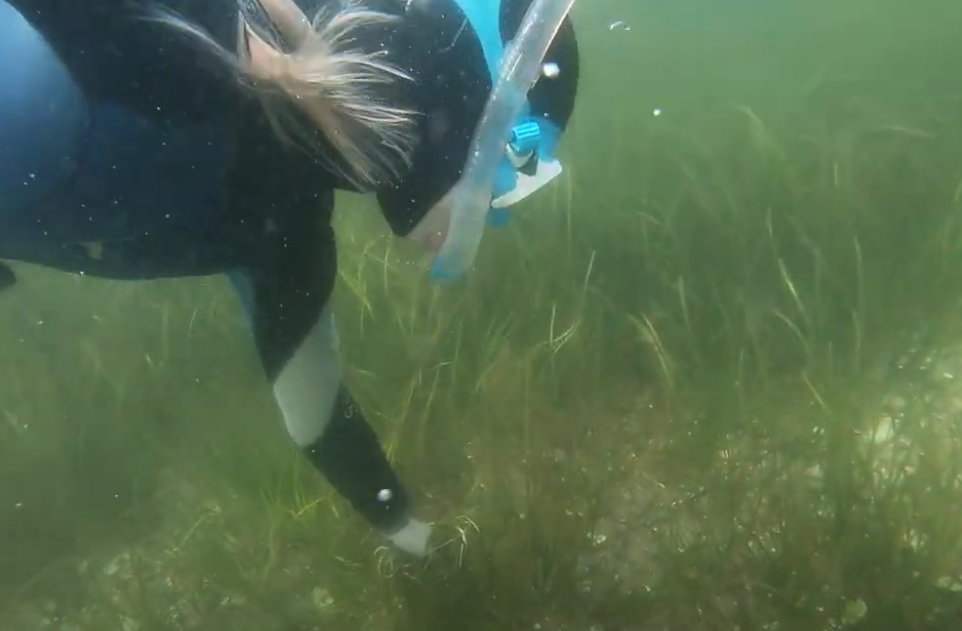Five groundbreaking initiatives to revitalise corals
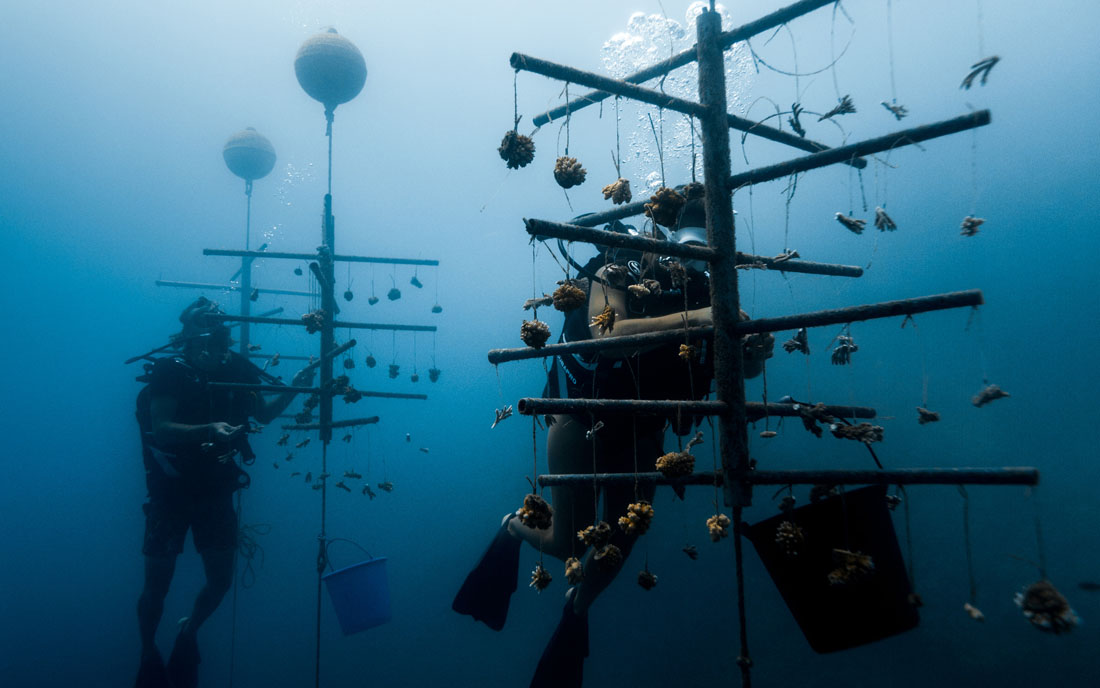
Corals have been suffering from climate change for years. In particular, the rise in water temperature can lead to coral mortality, and instead of thriving reefs, all that remains are dreary seabeds. Therefore, more and more people worldwide are committed to restoring already damaged reefs.
Corals live in symbiosis with algae, which normally give the reefs their intense colors. However, if the water temperature increases, so-called coral bleaching can occur, which can lead to the subsequent death of the corals. Corals have been suffering from climate change for years, stressed above all by the sharp rise in water temperature. But hurricanes, pesticides, fertilizers and other pollutants, overfishing or fishing with dynamite also damage reefs. The search is basically on for the super coral, which is particularly resistant to heat and stress. For years, attempts have been made worldwide to restore damaged reefs. Corals are animals and can reproduce in two ways: Sexually, by releasing eggs and sperm into the water, which give rise to new baby corals. Or asexually from broken off pieces that land in a suitable spot on the reef and grow back into large sticks.
The GOOD-funded Coral Gardeners project has managed to breathe new life into nearly 40,000 former coral fragments from the reef in Moorea (Click here for the article). By 2025, the goal is to have one million corals. But they are not alone; more and more organizations and companies around the world are working to preserve and restore coral reefs. Since the international Convention on International Trade in Endangered Species of Wild Fauna and Flora (CITES) prohibits the export of corals across national borders, the cnidarians have to be farmed locally – on land, in laboratories or underwater. This leads to different approaches worldwide, as local conditions are also diverse. Scientific support and careful planning are often decisive for promising approaches. And they are all driven by the same goal worldwide: to protect the marine ecosystem and save coral reefs.

Coral Vita – Successful coral farms on land
Until now, coral restoration – the process of introducing healthy corals to marine reefs destroyed by coral bleaching – has only been done on a small scale. Together, U.S.-based Sam Teicher and Gator Halpern have established the first commercial coral farm on land in the Bahamas with their social startup Coral Vita. While visiting his first coral restoration project, he was fascinated by how coral reefs can recover. However, the NGO working there relied on traditional coral farming: In an underwater station, coral fragments could grow in the sea. Teicher found it too costly for such models to be supervised by divers. Therefore, Coral Vita and its team of scientists have been relying on their own coral farms on land since May 2019. The goal is to grow diverse and resilient corals on a large scale, as this is the only way to maintain the health of the reefs and the valuable benefits they provide. The coral gardeners break off fragments of live coral from the area and stick the pieces on land on tiles in water tanks through which clean seawater is pumped. There, the corals continue to grow quickly and undisturbed. “You take a fragment the size of a thumb, and in six to nine months you have a coral as big as a hand,” Teicher explains. The so-called microfragmentation method has succeeded in propagating corals up to 50 times faster than in nature. In addition, they are “stressed” to make them more resistant to coral bleaching and harmful environmental influences. Later, they are then outplanted into damaged reefs in the ocean. Coral Vita wants to scale coral farming – with a business model that is as sustainable as possible: The social start-up offers reef restoration as a service, but also markets the coral farms as a tourist attraction and organizes workshops.
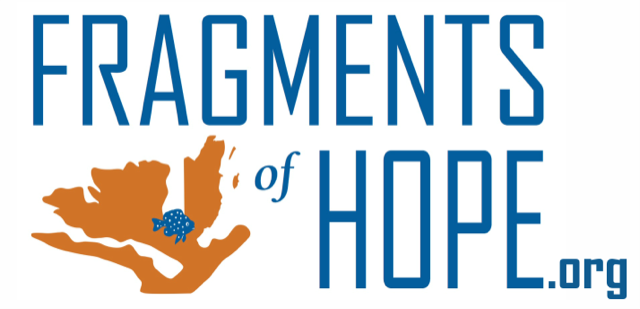
Fragments of Hope: More coral = more fish
It all started with the simple equation “more corals = more fish”. After Hurricane Iris, which destroyed the livelihood of many people in Belize, the inhabitants of the Placencia Peninsula were convinced of the importance of the reef for their lives. Marine biologist Lisa Carne founded Fragments of Hope, the first company in the country to use microfragmentation, a revolutionary technique for growing super corals. Such corals are stronger and more resilient than others because they have adapted better to climate changes and are particularly resistant to heat and stress. A decisive factor for the successful start in Belize was that the acroporid coral, a Caribbean coral species, was placed on the endangered species list in the USA. From that moment, the way was clear to make a difference with coral nurseries. Coral restoration is done by trained fishermen and guides, and there is close collaboration with regulatory agencies. With extreme care, after long research and selection, few fragments of individual corals are taken, which are particularly hardy and grow quickly. First, the coral is sawn into five-centimeter pieces. Then these are cut in half – the “Fragments of Hope”. They plant these small pieces of coral wherever others have died. In eight years, the corals have grown from less than six percent to already over 50 percent. The effort is worth it, diversity is returning.

SECORE International, Inc. – A future for coral reefs
Founded in 2012, Secore International is a non-profit organization comprising a global network of scientists, zoo and aquarium staff, and local stakeholders. Its director, Dirk Peterson, is a specialist in reef restoration based on his research on coral propagation at Rotterdam Zoo, which is currently underway in Guam, Mexico and Curacao. Corals are bred in aquariums and research facilities and settled in coral reefs. This work requires appropriate infrastructure and logistics, which Secore can provide because of its partners. Together with the Global Coral Reef Alliance, a worldwide organization for saving coral reefs, the BioRock project was established in Curaçao. For this, large metal grid constructions were anchored in the shallow, sandy area of the reef. Expert:ins then collected pieces of coral that had broken off naturally and attached them to the framework. The metal grids are slightly electrified to initiate electrolysis in the water. As a result, minerals from the seawater are deposited on the metal as calcium carbonate. Corals have optimal growing conditions on this substrate. In the past 30 years, up to 98 percent of the elkhorn corals have died. They are a central organism of many reefs in the Caribbean and provide shelter for other animals from the surf of the sea. Now, elk antler corals from a laboratory breeding program have apparently become established enough to reproduce on their own. “This gives us hope that it may actually be possible to restore damaged coral reefs,” Petersen said.

Coral Restoration Foundation™ (CRF): Coral Trees in the open ocean
The Coral Restoration Foundation™ (CRF) is the world’s largest nonprofit marine conservation organization dedicated to restoring healthy coral reefs. The Florida Reef is the third largest coral reef system in the world after the Great Barrier Reef in Australia and the Belize Barrier Reef. American Ken Nedimyer was not about to sit idly by and watch the decline of the marine Garden of Eden. As a professional aquarium fish catcher and live rock farmer who grows marine organisms on rocks off the Florida Keys, he has witnessed the environmental changes firsthand. As a reef rescuer from the beginning, however, his initial rescue attempts did not yield the success he had hoped for, and he searched for years to find the right form for his coral nurseries. Until Nedimyer invented his Coral Trees – meter-long tree-like scaffolds made of plastic. Finger-sized fragments of elk antler and deer antler corals are tied to these, the framework is fixed to the seabed with a rope and held to the water surface with a buoy. For him alone, this could not be done in the long run, so Nedimyer founded the CRF organization. The organization now operates seven nurseries with more than 500 coral trees off the coast of Florida – and volunteers are reforesting the underwater paradise. In addition to reforestation, their focus is on education and knowledge sharing. Since the challenges on other reefs are very similar, other teams could learn from their mistakes and make faster progress in conserving the reefs.
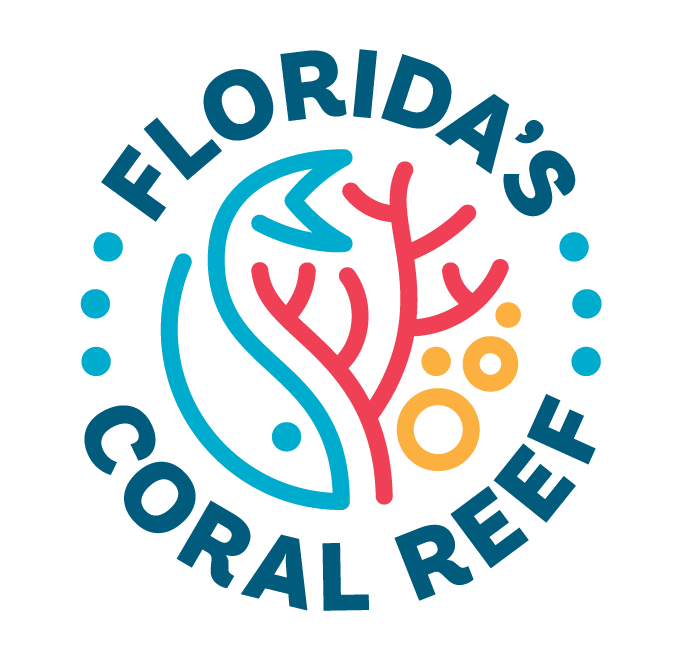
Nature Seychelles: Nurseries underwater
The environmental organization Nature Seychelles works with so-called super corals in its reforestation efforts. These corals are strong and resilient, having survived in recent years while others have died. In this way, the reef is expected to recover and better withstand coming disasters. For this purpose, stakes are driven into the seabed and ropes are stretched between them. Fragments of coral are attached to the long cords, about 100 times per cord. This creates the coral nursery underwater, which has to be cleaned regularly by divers. Off some Seychelles islands, the underwater world has recovered, giving endangered fish species a habitat again.
Volunteer abroad: Coral conservation on vacation
Coral reef conservation projects are a perfect way for ocean lovers and passionate divers to help protect coral reefs while on vacation.
You can volunteer via Volunteer World.
MORE ABOUT THE PROJECT
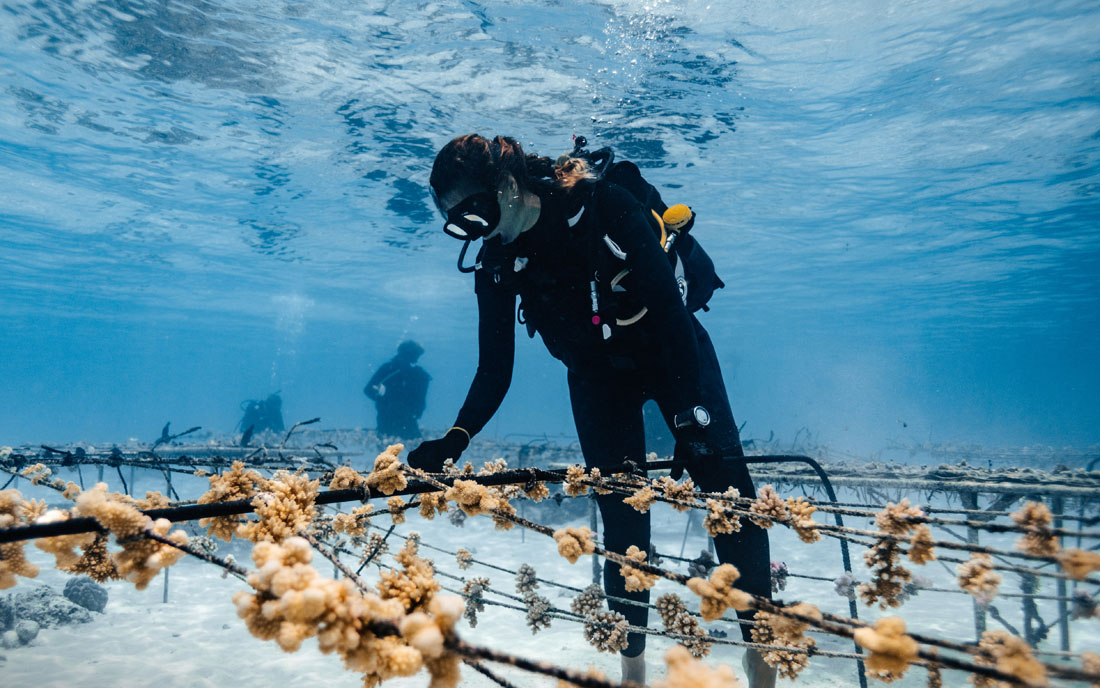
Coral Gardeners
We support Coral Gardeners in March 2023 with the proceeds of GOOD. You can find out more about it on our project page:
Questions, criticism, suggestions? Write us!
Andreas Renner, Co-Founder GOOD: andreas@good-search.org
